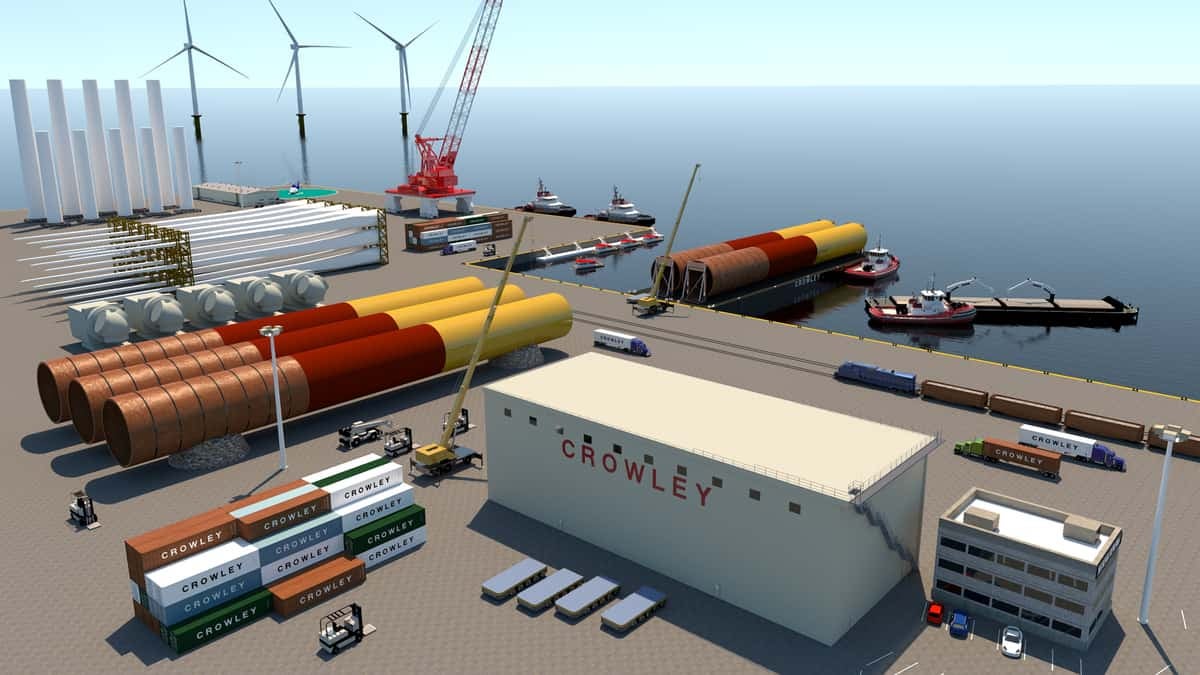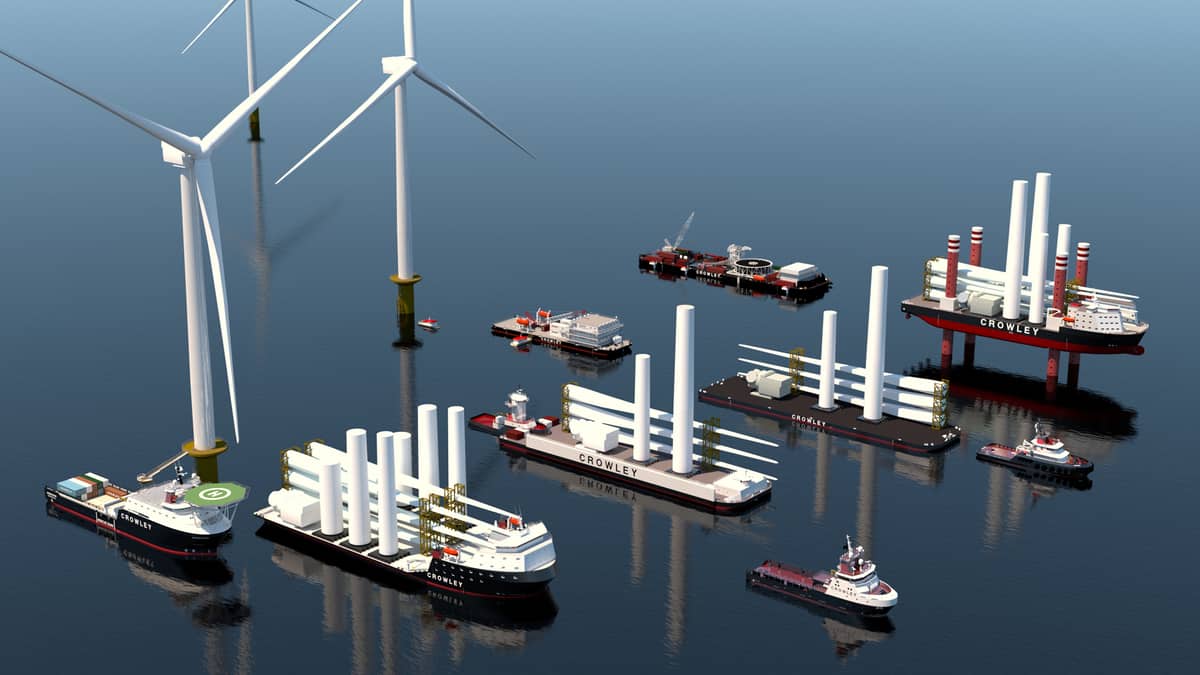Crowley has spent the past 53 years providing U.S.-flag vessel assets and logistics support to the offshore oil and gas industry and now is gearing up to provide that same transportation skill set to the burgeoning offshore wind farm industry in America.

It is forecast that as many as 2,000 gigantic, multi-megawatt wind turbines will be generating 29 gigawatts of electricity off the U.S. coast for hundreds of thousands of American households by 2040. However, the industry is only at the starting line in terms of construction. Available portside infrastructure and U.S.-flag vessel assets are also largely in their infancy.
So far, five turbines with a collective output of 30 megawatts of electricity are operating off the coast of Block Island, Massachusetts, and two trial machines (generating 12 megawatts) were recently erected off the coast of Hampton Roads, Virginia. Now many coastal states and offshore wind farm developers are eager to begin full-scale installation work within the next several years.
“We view this as a once-in-a-generation opportunity,” Bruce Harland, vice president of business development for Crowley offshore services’ wind farm program, told American Shipper in a telephone interview.
Experience from offshore oil and gas
Once Crowley’s vessel assets and crews are deployed to offshore wind farm work, Harland envisions that they will remain engaged in a 25-year, “cradle-to-grave” activity — in other words, from the construction of the turbines to their eventual decommissioning.
To start, Crowley plans to redirect U.S.-flag tugs and heavy-deck barges from the offshore oil patch to transport wind turbine components — tower sections, blades and nacelles — from U.S. ports to mobile offshore platforms, which will perform the actual construction of the wind turbines.
Harland said Crowley’s initial vessel equipment deployed to offshore wind turbine transport will require only minor modifications to secure components to the barge decks and provide safe and efficient transfers to the installation vessels. “We’re currently conducting computer simulations of this work,” he said.
Crowley is also in regular contact with offshore wind farm specialists in Europe to learn from their 30 years of experience with this type of component transport and offshore construction. Europe currently operates just over 5,000 offshore wind turbines generating about 22 gigawatts of electricity across 12 countries, according to the Brussels-based trade association WindEurope.

Crowley is also looking ahead at what future U.S.-flag vessel assets it may build and deploy for offshore wind farm work. The company’s in-house marine engineering group has several designs on the table, said Jeff Andreini, general manager for Crowley offshore services.
Jones Act compliance
Section 27 of the 1920 Merchant Marine Act, better known as the Jones Act, generally requires that vessels transporting cargo from one U.S. point to another in coastal waters be U.S.-built, U.S.-flagged and U.S. citizen crewed.
This strict regulatory requirement has many offshore wind farm developers nervous about the general availability of U.S.-flag vessel assets and the expertise of their operators to get the work underway. The biggest concern is the lack of U.S.-flag turbine installation vessels.

Installation vessels have legs that jack up on the ocean floor providing a stable work platform. They also include heavy onboard cranes to lift wind turbines components into place, as well as crew quarters.
Dominion Energy (NYSE: D), which recently installed the first two offshore wind turbines for the planned Coastal Virginia Offshore Wind farm, has decided to construct its own Jones Act-compliant turbine installation vessel. Industry estimates put the price tag of the vessel to be around $500 million.
The company said it plans to make the installation vessel, which is expected to enter service at the end of 2023, available to other offshore wind farm developments after it completes its own off the coast of Virginia.
Crowley currently has no plans to build Jones Act-qualifying wind turbine installation vessels, not only due to their cost but also the risk associated with the increasing size of offshore wind turbines that could outstrip a ship’s handling capabilities within several years instead of the expected 20-year service lifecycle, Harland said.
2nd Wind Marine, a Louisiana-based company, in June announced plans to build two Jones Act-compliant jack-up vessels for use in offshore wind turbine installation. The company said each vessel will be able to transport a single set of wind turbine components from port to the offshore installation site.
There will also be a need for a fleet of smaller Jones Act-compliant vessels to transport crews to and from the installation ships, as well as to provide ongoing turbine maintenance once the offshore wind farms are in operation.
Harland is not worried about the ability of U.S. shipyards to quickly respond to this need for offshore wind farm-oriented vessels. “America is pretty good at ramping up to meet the challenge with the commitment,” he said.
Crowley executives also feel strongly that once the construction of offshore wind farms gets underway that it will generate a host of new American manufacturing and service jobs. “Many wind farm developers sold the states on the idea that these activities will stimulate their economies through job creation,” Andreini said.
Click for more FreightWaves/American Shipper articles by Chris Gillis.
Related News
ATS has wind energy at its back
Will wind turbine transporters continue to roll during COVID-19?











